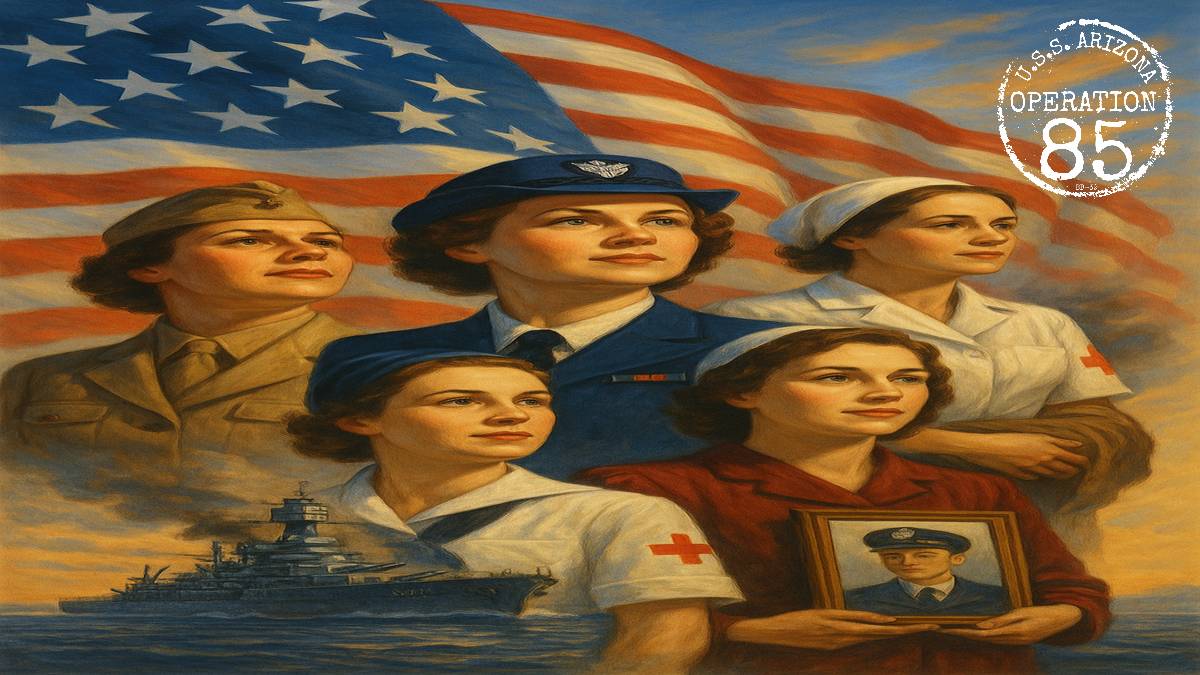
The Untold Stories of Women and Families Who Honored the USS Arizona Heroes
Written by: Bobbi Jo Buhl
Discover the brave sisters, mothers, and widows who answered the call during WWII, carrying on the legacy of the USS Arizona’s fallen crew members in their own remarkable ways.
In January 1945 Elaine Hazel Dreesbach arrived at Pearl Harbor, Hawaii — one of 160 enlisted women who were the first female Marines sent overseas in World War II.
She was following in the footsteps of her brother, Herbert Allen Dreesbach, a Marine private on the U.S.S. Arizona when he was killed on Dec. 7, 1941, in the Japanese attack on Pearl Harbor.
Miss Dreesbach, also a private, and the other women were not allowed to serve in combat roles. Instead, they ran motor transport, carrying goods and packages around the harbor. She enlisted in April 1944 and served until at least early 1946.
A small number of sisters of other men killed on the Arizona served in the military during World War II, as did at least two mothers. Other sisters, mothers and widows of Arizona men went to work in defense industries, building bombs, ships and aircraft. These are a few of their stories:
— Soon after Robert L. Leopold was killed, his sisters, Katherine and Helen, became volunteers for the Army Air Forces. The country was on high alert for enemy attacks on the U.S. mainland, but radar wasn’t widely available in early days of the war. So, instead, the military used civilians to report plane sightings. Working at the Interceptor Command in New York City, the Leopold sisters and dozens of other young women tracked the movement of planes by plotting them on maps.
Katherine next joined the WAVES — Women Accepted for Voluntary Emergency Service — and served in Washington, D.C. WAVES was the women’s branch of the Naval Reserve. Like her brother, she became an ensign.
Meanwhile, back home in Louisville, Kentucky, their mother, Irma, volunteered for the Navy League and with Bundles for Britain. The latter group sent clothes, blankets, medical and other supplies to British civilians during the war.
— Amos Paul Pace and Connie Manning were married for little more than a year when he was killed. Connie soon enlisted in the WAVES and served throughout the war as an aviation machinist’s mate, mostly at Navy air stations in St. Louis and Memphis.
— Widow Clara May Dyer Morse’s only two children, Francis and Norman, also died.
On the day of the attack, Mrs. Morse wrote in her diary that she would never “sing before breakfast again” as she had that morning.
The next year she became a Red Cross nurse’s aide and served military men in hospitals from Colorado to California, and from Virginia to North Carolina. And she kept writing in her diaries, which were donated after her death in 1982 to the Colorado Historical Society.
This is one entry, from Dec. 7, 1946: “I’m tired and ready to quit. I don’t want to go on. Well I simply must pull myself together and carry on… The whole world has gone wild, or else I look at it this way. What a dull life yet I’ve had a good full life, thank you God for loaning them for even a short time. Good night, Dear Ones.”
